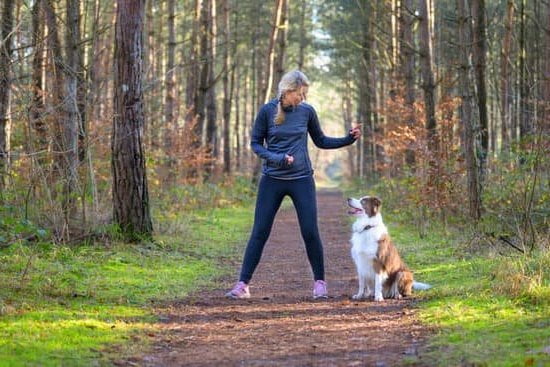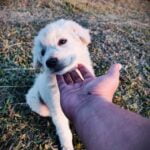Walking a dog that constantly pulls on the leash can be a frustrating and challenging experience for many pet owners. The constant tugging can not only make the walk uncomfortable for both you and your furry friend but also potentially dangerous. So, how do you train a dog not to pull? In this article, we will explore effective strategies and techniques to help you teach your dog proper leash manners.
One of the most common reasons why dogs pull on the leash is simply because they are excited and eager to explore their surroundings. Others may have learned that pulling gets them to where they want to go faster. Understanding these underlying reasons is crucial in addressing this behavior effectively. By recognizing why your dog pulls, you can tailor your training approach to better meet their needs and ultimately achieve success in teaching them to walk calmly on a leash.
Setting clear training goals is essential when working towards improving your dog’s leash walking behavior. Whether you aim for loose leash walking or simply reducing the pulling, having a specific objective in mind will guide your training sessions and track progress effectively. Choosing the right equipment, maintaining consistency, incorporating positive reinforcement, and showing patience are key components in successfully training your dog not to pull on the leash.
Understanding the Reasons Behind Why Dogs Pull on the Leash
Dogs pulling on the leash is a common issue that many pet owners face when taking their furry friends out for a walk. Understanding the reasons behind this behavior is crucial in addressing and correcting it effectively. One of the most common reasons why dogs pull on the leash is simply because they are excited to explore their surroundings. Dogs have a natural curiosity and desire to sniff around, which can lead them to pull ahead when on a walk.
Another reason why dogs may pull on the leash is due to lack of proper training and reinforcement of good walking behavior. If a dog has not been taught how to walk politely on a leash, they may default to pulling as they try to take control of the direction and pace of the walk. Additionally, some breeds have a predisposition to pulling behaviors, either due to their size, strength, or instincts developed through breeding.
To address this issue effectively, it is important for pet owners to invest time and effort into training their dogs not to pull on the leash. Positive reinforcement techniques are often recommended by professional trainers as an effective way to encourage good walking behavior in dogs. By rewarding your dog with treats, praise, or play whenever they walk nicely on the leash without pulling, you can help them understand what is expected of them during walks.
| Reasons Behind Why Dogs Pull | Training Solution |
|---|---|
| Excitement and curiosity during walks | Positive reinforcement techniques such as treats and praise |
| Lack of training or reinforcement | Consistent training sessions focused on loose leash walking |
| Breed predisposition or instincts | Understanding breed characteristics and adapting training methods accordingly |
Setting Clear Training Goals for Walking Your Dog
When it comes to training your dog not to pull on the leash, setting clear goals is essential for achieving success. One of the primary goals should be to teach your dog to walk calmly beside you without pulling. This not only makes walks more enjoyable for both you and your furry companion but also ensures safety while out and about.
To start, consider what behaviors you want to see from your dog while walking on a leash. Do you want them to stay by your side without pulling, sniffing around too much, or getting easily distracted? By identifying specific goals, you can create a training plan that is tailored to address these behaviors effectively. Remember that consistency in reinforcing desired behaviors is key to successful training.
It’s important to break down your overall goal of teaching loose leash walking into smaller, achievable steps. For example, you can begin by practicing in a quiet environment with minimal distractions before gradually progressing to busier areas.
Celebrate small victories along the way, such as moments when your dog walks nicely by your side without pulling. By setting clear training goals and taking incremental steps towards them, you can effectively teach your dog not to pull on the leash while enjoying quality time together outdoors.
| Training Goals | Importance |
|---|---|
| Teach dog to walk calmly beside without pulling | Enhances walking experience and promotes safety |
| Identify specific behaviors desired during walks | Tailors training plan for effective results |
| Break down overall goal into achievable steps | Celebrate small victories and ensure progress |
Choosing the Right Equipment for Training
When it comes to training a dog not to pull on the leash, choosing the right equipment is crucial in setting you and your furry companion up for success. Here are some options to consider:
- Flat collar: A basic flat collar is suitable for most dogs, especially those who walk calmly on a leash. Make sure it fits securely without being too tight.
- Martingale collar: This type of collar tightens slightly when the dog pulls, providing gentle pressure to discourage pulling without causing harm. It’s great for dogs prone to slipping out of traditional collars.
- Front-clip harness: Harnesses that clip at the front encourage dogs to turn back towards you when they pull, helping to redirect their attention and prevent pulling.
While choosing the right equipment is essential, it’s equally important to ensure that your dog is comfortable with it. Introduce the equipment gradually, allowing your dog to sniff and inspect it before putting it on. Make sure the fit is appropriate and doesn’t cause any discomfort or restrictions in movement.
Remember that each dog is unique, so what works for one may not work for another. Take the time to experiment with different types of equipment until you find what works best for both you and your canine companion. Patience and flexibility are key in this process as you work towards teaching your dog proper leash walking etiquette.
With the right equipment in place, you can now move forward with implementing a training plan to teach your dog not to pull on the leash. By combining appropriate gear with consistent positive reinforcement techniques, you’ll be well on your way to enjoying stress-free walks with your four-legged friend.
Step-by-Step Guide on Teaching Your Dog Loose Leash Walking
Start With Basic Obedience Training
Before focusing specifically on leash walking, it is essential to establish a foundation of basic obedience training with your dog. This includes commands such as sit, stay, and come. These commands will not only help you communicate effectively with your dog during leash training but also establish you as the leader in the relationship.
Introduce Your Dog to Proper Walking Equipment
Choosing the right equipment for leash training is crucial. Opt for a well-fitting harness that does not restrict your dog’s movement or cause discomfort. Avoid using choke or prong collars, as they can harm your dog and create negative associations with walking. Additionally, using a strong and reliable leash will ensure better control during training sessions.
Practice Positive Reinforcement Techniques
During leash walking training, utilize positive reinforcement techniques to encourage desired behaviors. Reward your dog with treats, praise, or toys when they walk calmly by your side without pulling. Consistency is key in reinforcing good behavior, so make sure to reward your dog every time they exhibit the desired behavior. Avoid punishing or scolding your dog for pulling on the leash, as this may lead to anxiety or fear.
By following these steps and remaining patient and consistent in your training efforts, you can successfully teach your dog loose leash walking. Remember that every dog is unique, so adjust your training methods based on your pet’s individual needs and progress. With dedication and positive reinforcement, you can enjoy stress-free walks with your furry companion while strengthening the bond between you and your canine friend.
Consistency Is Key
1. Be Clear and Firm With Commands
To reinforce good leash walking behavior in your dog, it’s essential to be clear and firm with your commands. Use a consistent verbal cue, such as “heel” or “walk nicely,” every time you want your dog to walk by your side without pulling. Consistency in the command language will help your dog understand what is expected of them during walks.
2. Reward Good Behavior
Positive reinforcement is a powerful tool when training your dog not to pull on the leash. Whenever your dog walks nicely by your side without pulling, be sure to reward them with treats, praise, or a favorite toy. By rewarding good behavior consistently, you will motivate your dog to continue demonstrating the desired behavior during walks.
3. Stay Patient and Persistent
Training a dog not to pull on the leash requires patience and persistence. It may take time for your dog to fully grasp the concept of loose leash walking, so it’s important not to get frustrated if progress is slow. Stay patient with your furry friend and continue practicing regularly. Remember that every step in the right direction should be acknowledged and rewarded to encourage further improvement.
By following these tips for reinforcing good leash walking behavior with consistency, clear commands, positive reinforcement, and patience, you can train your dog to walk calmly by your side without pulling on the leash during every outing. Through dedication and commitment to training, you will strengthen the bond between you and your four-legged companion while enjoying stress-free walks together.
Troubleshooting Common Issues During Training
Tackling common issues that arise during training is an essential part of teaching your dog not to pull on the leash. One of the most common issues pet owners face is inconsistency in their training methods.
It is crucial to be consistent in your approach and use the same commands and techniques every time you walk your dog. Inconsistency can confuse your dog and hinder progress, so make sure all family members involved in the training are on the same page.
Another common issue when teaching a dog not to pull is distractions. Dogs are naturally curious and easily distracted by their surroundings, such as other animals, people, or even smells. To combat this, try to find a quiet, familiar environment for training sessions at first. Gradually increase distractions as your dog becomes more adept at loose leash walking. Always keep high-value treats handy to redirect your dog’s attention back to you when needed.
Lastly, impatience can be a roadblock in training a dog not to pull on the leash. Remember that learning takes time and every dog progresses at their own pace. It’s important to remain calm and patient throughout the process, as frustration can negatively impact your dog’s learning experience.
Celebrate small victories along the way and use positive reinforcement techniques to encourage good behavior. By addressing these common issues with patience and determination, you will set yourself up for success in teaching your furry companion proper leash manners”.
The Importance of Patience and Positive Reinforcement in Training
Training a dog not to pull on the leash requires patience and consistency. It is important to understand that dogs learn best through positive reinforcement rather than punishment. By using rewards and praise, you can encourage your dog to exhibit the desired behavior of walking politely on a leash. Here are some tips on how to effectively train your dog not to pull:
- Start by teaching your dog basic obedience commands such as “sit” and “stay” before moving onto leash training.
- Use high-value treats or toys as rewards for good behavior during training sessions.
- Avoid using harsh corrections or punishment as this can create fear and anxiety in your dog, making training less effective.
Consistency is key when it comes to training your dog not to pull on the leash. Make sure that every walk you take with your dog reinforces the same rules and expectations. If your dog starts pulling, stop in your tracks until they relax and walk calmly by your side. Remember that training takes time, so be patient and celebrate even small progress.
- Practice walking in different environments to solidify the training and help your dog generalize the behavior.
- Continue to use positive reinforcement techniques even after your dog has mastered loose leash walking to maintain good behavior.
- Regularly review and reinforce the training to prevent any setbacks in behavior.
Going Beyond Leash Walking
Building a strong bond with your dog goes beyond just leash walking. Through training, you can deepen your relationship with your furry companion and enhance the overall quality of your time together. One of the most effective ways to strengthen your bond is by incorporating training sessions into your daily routine. This not only provides mental stimulation for your dog but also allows you to communicate and connect with them on a deeper level.
Training sessions can cover a wide range of activities, from basic obedience commands to more advanced tricks and behaviors. By engaging in regular training exercises, you are not only teaching your dog new skills but also reinforcing the bond of trust and respect between you both. Remember, training should always be a positive experience for both you and your dog, so be patient and consistent in your approach.
In conclusion, training is a powerful tool that can help you build a stronger bond with your dog while addressing behavioral issues such as pulling on the leash. By understanding the reasons behind why dogs pull, setting clear training goals, choosing the right equipment, and utilizing positive reinforcement techniques, you can effectively teach your dog not to pull on walks.
Remember, consistency is key in training, so stay patient and dedicated in your efforts. With time and effort, you will be able to enjoy stress-free walks with your well-trained canine companion by your side.
Frequently Asked Questions
How Do I Train My Dog Not to Pull When I Walk?
Training a dog not to pull on walks requires consistency and patience. One effective method is using positive reinforcement, rewarding your dog for walking by your side. Additionally, teaching basic commands like “heel” can help establish boundaries.
How Do I Stop My Dog From Extremely Pulling?
If your dog is pulling excessively, it’s important to address the issue promptly to prevent it from becoming a habit. Using tools such as no-pull harnesses or head halters can provide better control during walks. Seeking guidance from a professional trainer may also be beneficial.
How Long Does It Take to Train a Dog Not to Pull?
The time it takes to train a dog not to pull varies depending on the dog’s age, breed, and individual temperament. Consistent training and positive reinforcement are key factors in successfully teaching a dog to walk nicely on a leash. Some dogs may learn quickly while others may take more time and patience.

Welcome to the blog! I am a professional dog trainer and have been working with dogs for many years. In this blog, I will be discussing various topics related to dog training, including tips, tricks, and advice. I hope you find this information helpful and informative. Thanks for reading!





